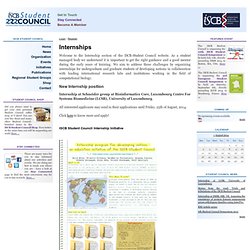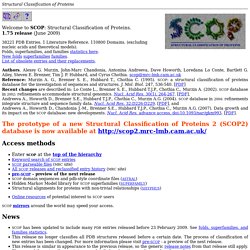

Bioinformática aplicada. Cursos 2005/2007 Licenciatura en Ciencias Genómicas, UNAM ©Bruno Contreras-Moreira and Heladia Salgado Con aportaciones de Cei Abreu-Goodger Programa de Genómica Computacional Centro de Ciencias Genómicas, UNAM 62210 Cuernavaca, Morelos México Este curso es parte de la licenciatura de Ciencias Genómicas de la Universidad Nacional Autónoma de México y está pensado para alumnos y alumnas que ya tengan cierta experiencia en bioinformática. Podéis mandarme comentarios o sugerencias através de la dirección de correo contrera_arroba_ccg.unam.mx. A pesar de que los sistemas operativos Windows dominan el mundo, puede decirse que en el ámbito de la bioinformática el rey es UNIX, normalmente en forma de linux.
Este tutorial tiene como objetivo capacitar al estudiante en el uso de comandos avanzados de UNIX en tareas bioinformáticas, viendo temas como scripts Perl/shell, combinaciones de comandos. Archivos de datos usados en los ejemplos: Comandos básicos Redireccionamiento de entrada y salida. Ejemplos: #! Datos.langebio.cinvestav.mx/~cei/cursos/R/ ISCB Student Council. Welcome to the Internship section of the ISCB-Student Council website.

As a student managed body we understand it is important to get the right guidance and a good mentor during the early years of training. We aim to address these challenges by organizing internships for undergraduate and graduate students of developing nations in collaboration with leading international research labs and institutions working in the field of computational biology. New Internship position Internship at Schneider group at Bioinformatics Core, Luxembourg Centre For Systems Biomedicine (LCSB), University of Luxembourg. All interested applicants may send in their applications until Friday, 25th of August, 2014. Click here to know more and apply! ISCB Student Council Internship Initiative If you are a Group Leader or a student, scroll down to learn more about this initiative.
Information for Group Leaders All Group Leaders offering an internship position should provide us with some required information: 1. 1. Recibidos - dianadvc - Gmail. D. melanogaster chr2R:5,865,492-5,869,541 - UCSC Genome Browser v265. Galaxy. BBCU - Sequence Analysis/Promoters. MGI-Mouse Genome Informatics-The international database resource for the laboratory mouse - StumbleUpon. Unidad de Bioinformatica CBMSO. PDB. A Structural View of Biology This resource is powered by the Protein Data Bank archive-information about the 3D shapes of proteins, nucleic acids, and complex assemblies that helps students and researchers understand all aspects of biomedicine and agriculture, from protein synthesis to health and disease.

As a member of the wwPDB, the RCSB PDB curates and annotates PDB data. The RCSB PDB builds upon the data by creating tools and resources for research and education in molecular biology, structural biology, computational biology, and beyond. Use this website to access curated and integrated biological macromolecular information in the context of function, biological processes, evolution, pathways, and disease states. A Molecular View of HIV Therapy January Molecule of the Month Nuclear Pore Complex Deposition Preparation Tools Data Extraction Small Molecules Ligand Expo: Search the Chemical Component Dictionary for the IDs of released ligands Data Format Conversion 3D Structure Viewers. SCOP: Structural Classification of Proteins. Authors.

Alexey G. Murzin, John-Marc Chandonia, Antonina Andreeva, Dave Howorth, Loredana Lo Conte, Bartlett G. Ailey, Steven E. Brenner, Tim J. Algoritmos en bioinformática estructural. Kinemage Website. Dangle an updated and more general version of our program Dang in that it reads coordinates from a Protein DataBank (PDB) coordinate file for either protein or nucleic acid and generates geometric measurements for each residue.

It is different from Dang in that Dangle: is Java-based, includes the capability of reporting deviations from ideal geometry as well as measurement values, and has a very flexible input syntax for specified the measurements desired. Dangle output is given as colon-delimited values, one line per residue. It is designed for facile use in scripts, and is the usual source of input for Suitename, either to generate the data for MolProbity's multi-criterion table or in individual command-line use.
Usage information is available by typing "dangle -help" with the dangle shell script installed (or by typing "java -cp chiropraxis.jar chiropraxis.dangle.Dangle -help"). The output from dangle's help flag is readable online. Ramachandran Plot - Proteopedia, life in 3D. Ramachandran plot and contours from 100,000 high-quality general-case datapoints The Ramachandran plot is a plot of the torsional angles - phi (φ)and psi (ψ) - of the residues (amino acids) contained in a peptide.

In sequence order, φ is the N(i-1),C(i),Ca(i),N(i) torsion angle and ψ is the C(i),Ca(i),N(i),C(i+1) torsion angle. The plot was developed in 1963 by G. N. Ramachandran, et. al.[1] by plotting the φ values on the x-axis and the ψ values on the y-axis, as for the image at left[2]. Secondary structure plot regions. Algoritmos en bioinformática estructural. National Center for Biotechnology Information. Perl en bioinformática. Web Map Preferences. Bioinfo@LIPM. MicrobesOnline - A website for browsing and comparing microbial genomes. Search for promoters/functional motifs.